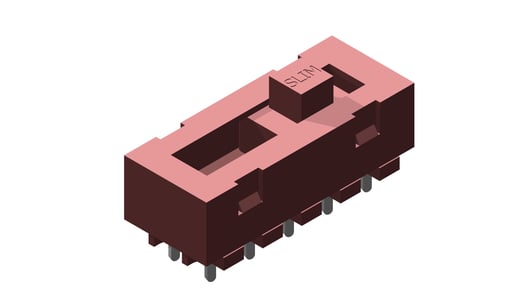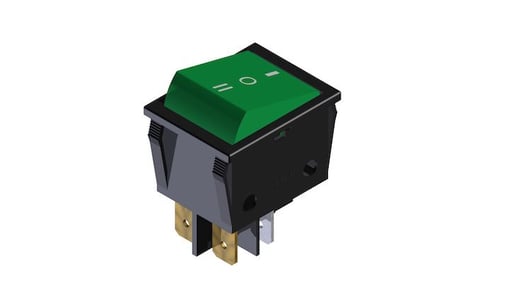Author: Editorial board

Bipolar and unipolar change-over switch: what is it?
One of the most common components in the electrical field, together with switches and diverters, is the change-over switch. Specifically, the diverter switch is a control positioned between two complementary circuits, whose function is to open one circuit while automatically closing the other, and vice versa. The change-over switch is a device that is very similar in structure to the diverter switch but differs from it in that it has, in addition, a stop position that allows both circuits to be kept open.
The origin of the name change-over switch can be traced back to the possibility of switching and thus changing, the operation of a device from one state to another. Depending on the type of application in which it is to be used, the switch can be a bipolar or a unipolar change-over switch.
Let's try to clarify these terms, which identify different types of controls, with an in-depth study dedicated to the change-over switch.
Let’s shed light on SLIM light signaling solutions
|
Are you looking for an electronic or light-signalling component? Click on the button below and discover SLIM's comprehensive range.
Bipolar change-over switch: the main types
There are several types of change-over switch on the market, the most common being the bipolar change-over switch, which in turn can have several variants:
- Bipolar momentary change-over switch
- Sliding change-over switch
- Bipolar rotary change-over switch
The bipolar change-over switch is used in electronic equipment and household appliances, affecting the various functions of the application in which it is inserted. The change-over switch is able to control multiple functions of an appliance through a single switch. For example, a 3-position bipolar change-over switch positioned on the handle of a hairdryer can be used to select different airflow speeds. If it is positioned centrally, it switches the appliance off.
Bipolar momentary change-over switch
There are also bipolar momentary change-over switches, such as those found in many homes, which are used for example to raise or lower electric blinds. In this case, when the switch is not pressed it remains in the central stop position while, depending on whether it is pressed on one side or the other, it raises or lowers the blinds for as long as pressure is maintained on the button.
Sliding change-over switch
There is also a slider or sliding change-over switch version of this control. In this way, the change-over switch can be positioned between two or even more circuits as, in addition to the stop position, it can have more than two closing positions (we talk about: two-position slider, three-position slider, four-position slider). This type is used, for example, to adjust the operating speed on equipment that has more than two speed options.

Bipolar rotary change-over switch
Among the various types of 3-position bipolar change-over switches, another very popular one is the bipolar rotary change-over switch. This control consists of a contact blade that is moved by means of a rotating shaft; the movement made feeds the various contacts arranged on the disc. It is also available in a radial rotary change-over switch variant, such as those supplied by Comelux, our collaborator and a leader in the design of electronic components.
In the SLIM range of devices, there are different types of change-over switch, in both unipolar and bipolar versions, depending on the type of application in which they are to be inserted. The various models of bipolar and unipolar change-over switches also differ according to the size of the template in which they are to be inserted. The main solutions are: 11x30mm, 22x30mm, 13x27mm, 13x19mm.
For sliders, on the other hand, there are versions with 1, 2, 3 and 4 positions, depending on the customer's specific requirements.
Would you like to receive more information about lighting solutions or electronic components? Click below and do not hesitate to contact us, a SLIM expert will be ready to help you!


